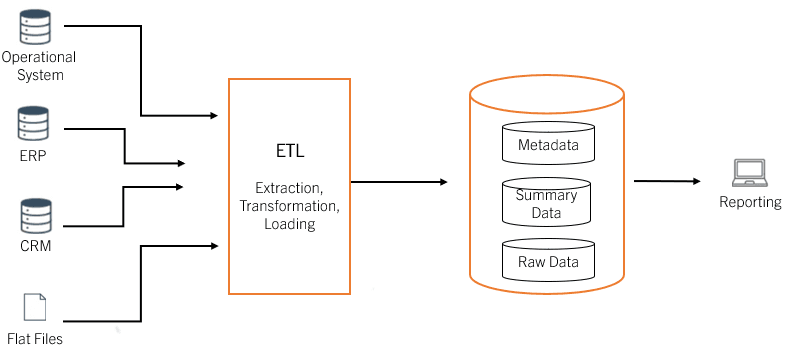How to improve productivity in DWH

Data Warehouse
In today’s data-driven world, businesses need a well-designed and scalable data warehouse architecture to manage and analyse large volumes of data.
What is a data warehouse?
A data warehouse is a central repository that stores, manages, and analyses data from various sources. It enables businesses to perform complex queries, generate reports, and gain insights into their operations. A well-designed data warehouse architecture is crucial for ensuring that the data warehouse can scale to meet the evolving needs of the business.
DWH Architecture

Data Model Design
Good data model should be simple, consistent, and normalized, as well as follow the best practices of data warehousing design, such as using dimensional modelling, star or snowflake schemas, surrogate keys, and appropriate indexes.
- Conceptual Model Design
- Logical Model Design
- Physical Model Design

We can see that the complexity increases from conceptual to logical to physical.
Start with conceptual data model (Understand on an extremely high level about different entities) -> logical data model (understand the details of our data without worrying about how to implement) -> physical data model (implement our data model in the database of choice)
How to increase the Productivity in DWH with example
Slow Data Loading and Refresh Rates
The current ETL processes are slow, causing delays in data availability for analytics and reporting. This impacts decision-making timelines and overall productivity.
Solution:
Implement Parallel Processing: Break down ETL tasks into smaller, parallelizable units to speed up data extraction, transformation, and loading.
Use Incremental Loading: Adopt incremental loading techniques to update only the changed data, reducing the volume of data processed and improving refresh rates.
Optimize Data Models: Review and optimize data models to minimize data redundancy and improve query performance during data loading.
Inefficient Query Performance
Slow query response times, affecting their ability to retrieve insights quickly and perform ad-hoc analysis.
Solution:
Indexing Strategy: Implement appropriate indexing on frequently queried columns to speed up data retrieval.
Query Optimization: Review and optimize SQL queries to reduce execution time and improve efficiency.
Partitioning: Partition large tables based on date or other relevant criteria to optimize query performance.
Use of Materialized Views: Precompute and store results of complex queries as materialized views to speed up query execution.
Complex Data Integration Across Multiple Sources
Integrating data from diverse sources into the Data Warehouse is complex and time-consuming, leading to delays in data availability and increased resource utilization.
Data Integration Platforms: Deploy robust data integration platforms (e.g., Informatica, Talend) that support seamless data extraction, transformation, and loading from various source systems.
API Integration: Utilize APIs and connectors to facilitate data integration between different applications and databases.
Data Federation: Implement data federation techniques to virtualize data access across distributed sources without physically moving data into the Data Warehouse.
Data Replication: Use data replication technologies to replicate and synchronize data from source systems to the Data Warehouse in near real-time, ensuring timely availability of data for analytics.
Value adds
Increasing the productivity of a Data Warehouse (DWH) involves adding value through various strategies and improvements. Here are several key value-adds that can significantly enhance DWH productivity:
Advanced Analytics and Predictive Modelling
Description: Integrate advanced analytics capabilities, such as predictive modelling, machine learning algorithms, and statistical analysis directly into the DWH.
Benefits: Enables proactive decision-making based on predictive insights, identifies trends, and patterns in data, and enhances forecasting accuracy.
Real-Time Data Integration and Processing
Description: Implement real-time data integration capabilities to ingest, process, and analyse streaming data sources (e.g., IoT (Internet of Things) devices, social media feeds) alongside traditional batch data.
Benefits: Provides timely insights for operational decision-making, supports real-time analytics, and enhances responsiveness to changing business conditions.
Scalability and Elasticity
Description: Deploy the DWH on cloud platforms that offer scalability and elasticity, allowing resources to be dynamically scaled up or down based on workload demands.
Benefits: Optimizes resource utilization, accommodates fluctuating data volumes and user concurrency, and reduces upfront infrastructure costs.
Conclusion
Implement best practices can help to maintain and monitor the quality, efficiency, and usability of data warehouse. This also includes documenting data warehouse design, structure, metadata, and processes, establishing and enforcing data governance policies, implementing data security measures and controls, creating backup and recovery strategies, implementing data quality and audit mechanisms, as well as performance measurement and improvement tools.

